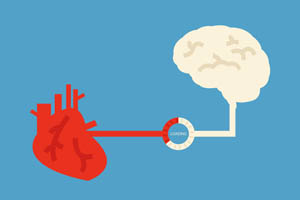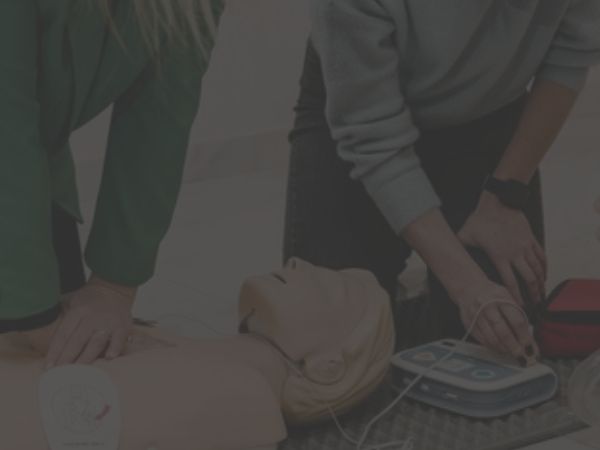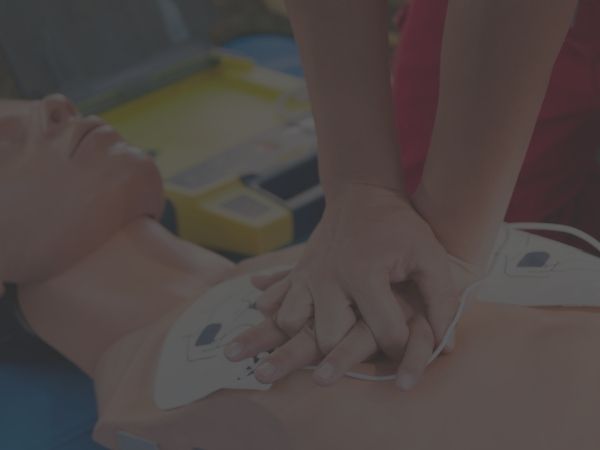Your cart is currently empty!
10 Examples of Where Online CPR Certification Can Save a Life
Out-of-hospital cardiac arrest affects 357,000 people annually in the U.S., asserts CDC.gov. It has a mortality rate of between 70 and 90 percent, and those that survive cardiac arrest are more likely to suffer permanent damage to the brain and body. Its costs are much more than financial burdens, resulting in the immediate loss of life equitable to 2 million years among men and 1.3 million years among women. This makes it the deadliest and costliest loss of life in the modern world.
Early intervention, including administering life-saving support, is crucial to reducing the burden and prevalence of cardiac arrest, and getting an online CPR Certification is the easiest way to ensure you are prepared for out-of-hospital cardiac arrests.
Cardiac arrest is also a confounding factor in mortality. It occurs when the muscles of the heart cease to function as expected. Although commonly associated with heart attack, cardiac arrest may occur without reason, due to an undiagnosed cardiovascular disorder, or as a result of another trauma, such as drowning. Cardiac arrest can occur in any setting and to those with the most innocent of traits, like children. By taking the time to understand the areas where cardiac arrest is more likely to occur, people can lessen the amount of life lost due to the failure of the cardiovascular system.
 1. Online CPR Certification Is Essential in Day Care Settings
1. Online CPR Certification Is Essential in Day Care Settings
Daycare facilities, also known as child care or early education facilities, are responsible for ensuring the safety and health of infants, toddlers, and young children. These facilities provide a vital service to parents or guardians while at work or attending college. Although the focus is on educating the youngest children how to behave and learn, workers in child care must understand the risk for cardiac arrest.
There was a time when cardiac arrest among children was seen as a rarity, reports the International Liaison Committee on Resuscitation. Studies over the last three decades isolated non-cardiovascular problems as a cause of cardiac arrest among children. However, the narrative has evolved to look beyond the typical causes of arrest. Instead of focusing solely on electric disorders and cardiomyopathies, additional research is needed to truly identify the scope of issues contributing to cardiac arrest in children and young adults. A mountain of evidence supports the prevalence of electrical problems in the heart, but the lack of studies surrounding non-electrical conditions means any child could be at risk for arrest.
The risk for sudden cardiac arrest in children and the risk for an accident or trauma among children are two of the primary reasons daycare workers should know CPR. In fact, certain states have mandated that daycare and child care workers obtain and maintain a CPR Certification, reports Mass.gov.
2. CPR and AEDs Save Lives in Schools
Schools are another place where the risk of cardiac arrest is often overlooked for similar reasons to child care facilities. Schools have an additional problem. The ratio of students to teachers is significantly higher, and it is impractical to assume every student is supervised by a teacher at all times. Even in classrooms, a teacher that steps out of the room could return to find a student in extreme medical distress.
Other parts of the school, including sporting and extracurricular events and lunch, may have a higher risk of cardiac arrest too. Lunch periods are the times when choking risk is highest in the school, so knowing how to respond is crucial to reducing mortality. As schools have come into the modern age, offering an assortment of vocational courses, the risk for cardiac arrest, or other severe injuries has risen.
For instance, woodworking courses may result in an accident leading to loss of blood, resulting in cardiac arrest.
3. Restaurant Applications of CPR Include Helping Those in Cardiac Distress, Including Choking
Choking is the fourth leading cause of unintentional injury death in the U.S., asserts the National Safety Council. The risk for choking is highest in facilities where physical mobility among people is diminished or relatively new. In other words, choking may occur in the smallest children being introduced to solid foods for the first time and in the elderly due to impairments in swallowing ability. Aside from these areas, restaurants may have a higher risk of encountering a person that’s choking due to their nature.
Choking does not have to result from eating too much or swallowing too soon. Fear responses to stimuli can lead to choking, and unknown allergies may result in the closure of the throat due to immune system response. Although family members and bystanders may be present and capable of performing abdominal thrusts to remove a lodged item, restaurant staff should have the training to provide life-saving support in these situations. Moreover, choking places an immense burden on the heart, and deprived of oxygen, it may result in cardiac arrest, requiring CPR. Think about that possibility the next time you sit down at your favorite restaurant.
4. Non-Emergency, Health Care Facilities Require CPR-Certified Staff
Someone that has suffered an out-of-hospital cardiac arrest will be on their way to the hospital, but there is an entire sector of health care facilities that lack hospital capabilities. Although they may not have the intense and immediate access to the measures necessary to treat cardiac arrest after restoring a stable rhythm, these facilities must be able to provide support until advanced care teams arrive.
Facilities in this group include non-emergency health care locations, like doctor’s offices, wellness clinics, nursing homes, and home health agencies. These facilities require CPR-trained staff, including those not involved in direct care. For instance, those thinking about employment in such facilities without providing direct care, such as working in the kitchen or housekeeping, may need to complete a life-saving skills course. Getting an online CPR Certification may be the easiest way to increase the attractiveness of an application for employment.
5. Office Spaces Benefit From Life-Saving Skills-Trained Employees
CPR Certification is also a great tool for employees working in office buildings or administrative settings. The risk for cardiac arrest increases with age, but the group with the highest risk are young adults between adolescence and age 30. This is the period where major medical issues are more likely to begin to impact physical and emotional well-being. As a result, cardiac arrest rates in office spaces may increase.
Office building managers may encourage CPR Certification as well, offering courses on-site or at a discounted rate. Check with your employer to see if you qualify for any discounted CPR or First Aid courses now. Also, encourage others in your company to get their CPR Certification. A day at the office could be the last for someone living with an undiagnosed medical illness, but providing support until EMS arrives can greatly increase the chances of survival.
6. A Shopping Journey Can Become an Emergency
Even retailers are not safe from the risk of cardiac arrest. A shopping journey, whether to the mall or grocery store, can feel safe and simple, but emergencies may still occur. A slip or fall could exacerbate underlying health problems. Taking a sample of the latest delicacy could become a choking incident. Active shooter situations may occur.
This day and age is ripe with risk. Since staying home at all times is impractical, prepare for the unexpected by getting your CPR Certification. Some retailers may also offer an added incentive for employees that obtain life-saving certifications, such as discounted rates on insurance or even additional pay.
7. Auto Collisions and Trauma May Warrant Use of CPR
Auto collisions are increasingly common. In 2017, the risk of being in a vehicle collision grew for the second consecutive year, reports The Verge. Fortunately, mortality from auto collisions decreased by 1.8 percent in the same period. However, the risk of auto collisions and related death is increasing a faster pace among the most popular vehicles in the U.S., SUVs.
SUVs and light trucks make up more than 60 percent of vehicles on America’s roads, and they have the highest mortality rates. Moreover, the number of pedestrians struck by an SUV has risen by 81 percent over the last decade, and such trauma requires immediate medical intervention. Specifically, the larger size and design of SUVs mean a more forceful blow to the torso for pedestrians, which dramatically increases the risk of internal bleeding and cardiac arrest. Until EMS arrives, the best way to increase survival is knowing how to provide First Aid and CPR, and this is true for both vehicle-vehicle and vehicle-pedestrian collisions.
 8. Athletes May Have an Increased Risk of Cardiac Problems
8. Athletes May Have an Increased Risk of Cardiac Problems
Athletes carry a unique risk for cardiac arrest. According to UW Medicine, sudden cardiac arrest is the leading cause of death among young athletes. This is the result of massively undiagnosed medical risks for cardiovascular problems. Evidence suggests up to 250 of 300 young athletes may have an undiagnosed heart disorder, increasing their risk. In other words, 83 percent of adolescents and young adults playing sports are a moment away from cardiac arrest. Sadly, mortality rates among this group are higher compared to other places where the out-of-hospital arrest occurs.
This may be due to an unrecognized case of cardiac arrest, asserts the National Library of Medicine. In a study of six individual cases of cardiac arrest in young athletes, four exhibited no signs of cardiovascular distress before losing consciousness during the event. Their pupils were fixed, and no other signs of trauma had occurred. The only way to address this problem lies in providing CPR immediately. Every second lost in trying to find someone with the knowledge of how to perform CPR increases mortality risk.
9. Volunteers With CPR Increase Their Ability to Help Others
Volunteers, including those working in both disaster areas and for humanitarian purposes, should also have a CPR Certification. Volunteers play a vital role in helping areas struggling with poverty, lack of education, and political instability, but the importance of CPR training becomes more notable for volunteers working in areas following a disaster.
Hurricane Michael’s recent track through Florida and the East Coast, as well as its ongoing rains, allude to the importance of responding to those in distress. As of October 12, six people lost their lives in the storm, and with the storm’s extended recovery, the death toll may continue to increase. Volunteers with a certification in First Aid and CPR are well-equipped to help those rescued from the debris, and paired with the prevalence of pre-existing conditions that increase risk of cardiac arrest, a volunteer may be the first person to respond when someone loses consciousness due to arrest.
10. CPR May Become Key to Survival When Traveling
One of the final overlooked areas where CPR training can make a big difference is about traveling. People travel for different reasons and to countless destinations. They may travel in a car, by bus or plane. Each of these methods of transportation can be a potential place for cardiac arrest to occur.
In the bus and plane examples, there will be periods where getting EMS assistance will not be immediately possible. Even those choosing to drive to their destinations with family members or friends may be incapable of reaching EMS immediately. Think of an isolated road, miles away from town. In a plane, an emergency landing could still take 10 minutes or more, and that is assuming an airport is nearby.
Someone with a CPR Certification is going to mean the difference between life and death for those that suffer a cardiac arrest on a plane. Flight attendants may be encouraged or required to have life-saving certifications too, including CPR Certification, but passengers should also know how to respond. More certified individuals can reduce the time to providing life-saving support to those suffering cardiac arrest. While you cannot control the actions of those around you, you can get your certification before facing such a possibility.
Be Prepared When Someone Needs CPR or BLS, and Remember to Sign up for Your Online CPR Certification Course Now
The most mundane of days can turn for the worse in seconds. Sudden cardiac arrest, major cardiovascular problems, including heart attack and stroke, and other issues can leave someone teetering on the brink of death. Every activity can turn into a life-threatening situation, and knowing how to respond and provide CPR will mean the difference between life and death. These 10 examples demonstrate the most common areas where online CPR Certification can increase the chances of survival outside of the hospital. Knowledge is indeed the power to save a life.
Have you been thrust into a situation where CPR was necessary outside of the hospital or workplace? Share your experience along with this article to social media, and remember to enroll in your life-saving skills’ course today.
Keep Reading
8 responses
Thank you for the feedback and comment!
Having knowledge of first-aid is critical especially when it comes to being around in public settings or working jobs with other people such as daycare or being a teacher in school. The same goes for people who work in the office who can readily respond to any medical emergency with what first-aid they can provide since saving the individual is a top priority until proper medical attention arrives. If I have the chance to take a first aid class or several, I would definitely take them since having this knowledge is invaluable no matter the circumstance.
We could not agree more, thank you for being a lifesaver!
Thanks for sharing this information. very nice.
Thank you for the feedback!
Thanks, I have just been looking for information about this subject for a long time and yours is the best I’ve discovered till now. However, what in regards to the bottom line? Are you certain in regards to the supply?
Hi Daryl, we’re delighted that you found the information useful. In response to your question about the last sentence, absolutely! You can sign up for the life-saving skills course by clicking on this link: Life-Saving Skills Course.










Being able to save someone’s life in any of these situations would be exceptionally important. Anyone can be at risk really and it’s up to us to be prepared for any situation. I do agree with you that schools are at risk for heart problems as there are quite a few more students than teachers. I’d hope that most if not all teachers would become bls certified.